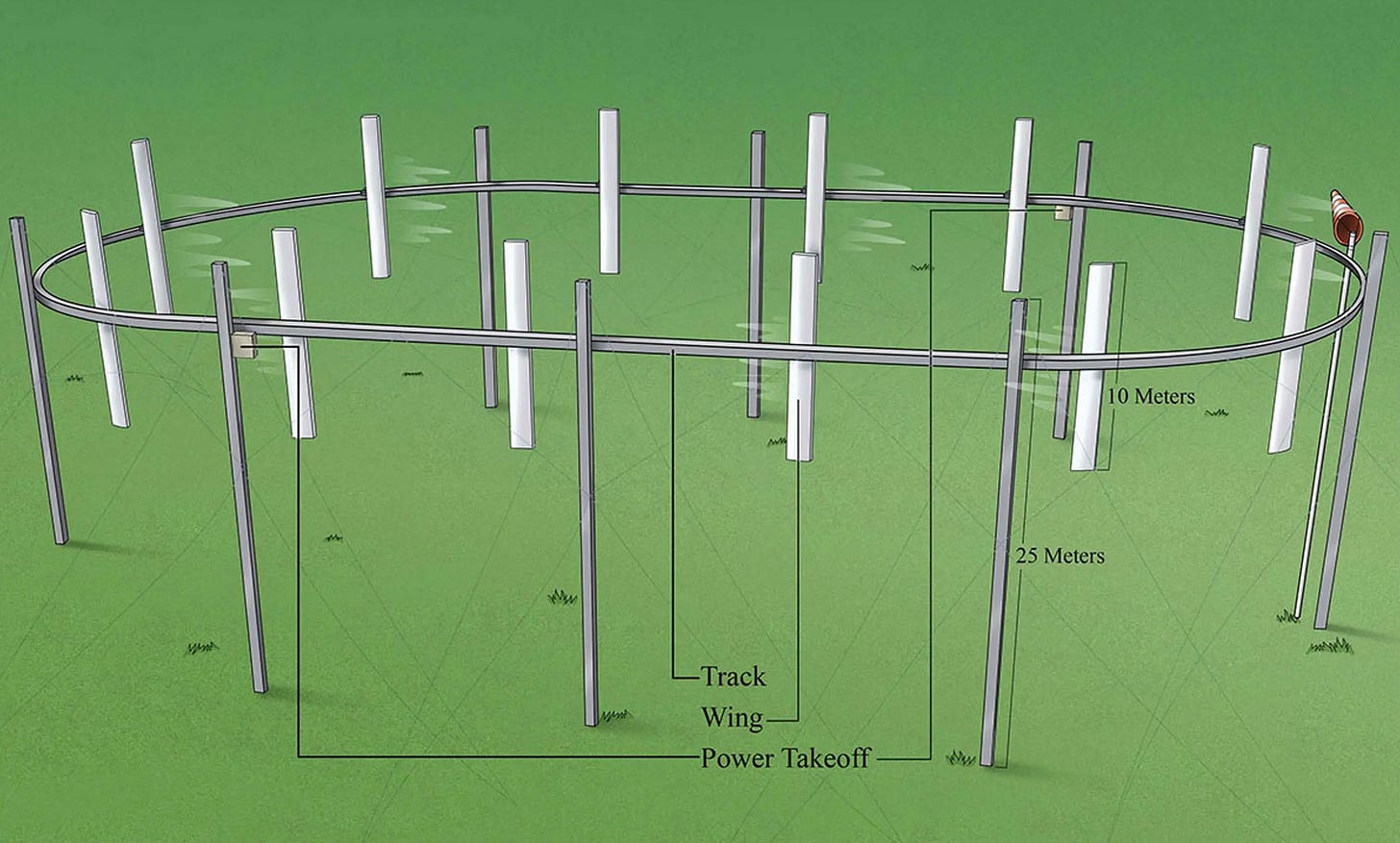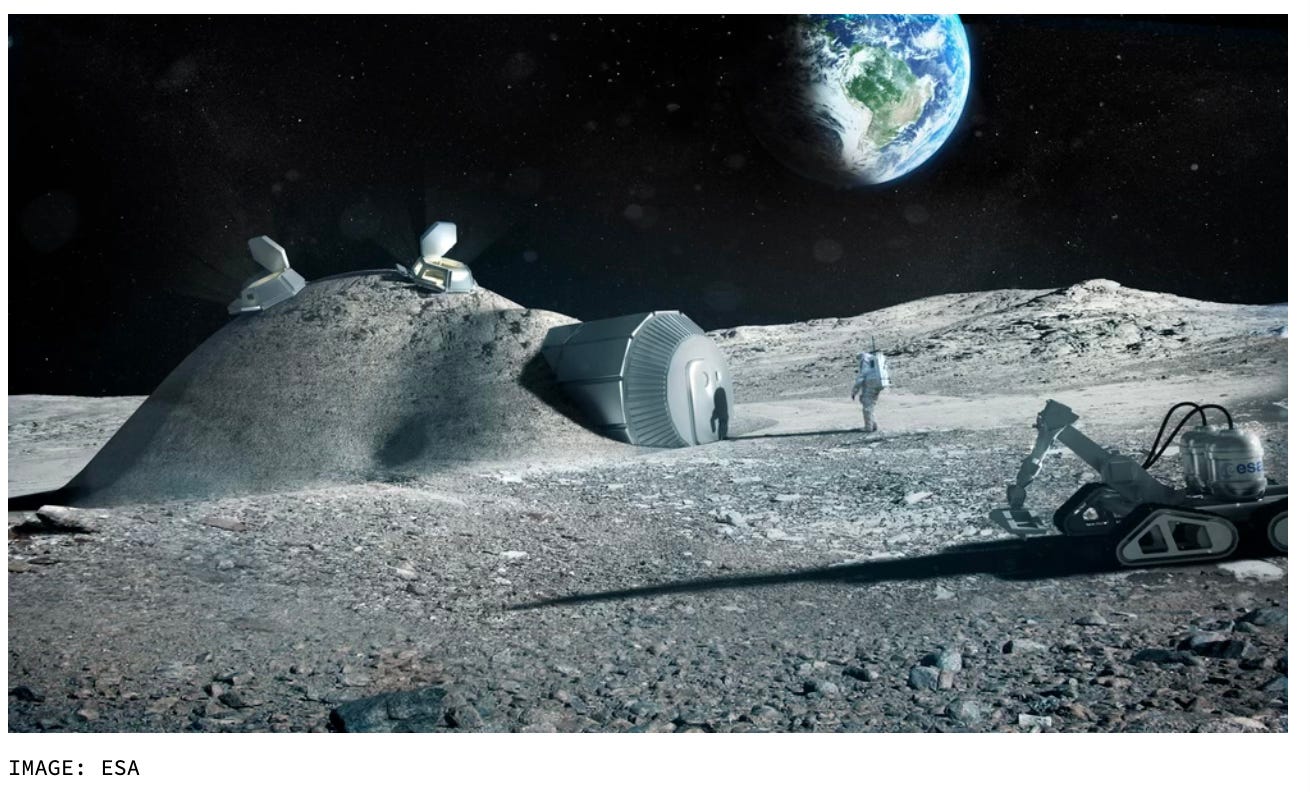This week we investigate a new AI that can pick up individual sounds and relay them to earphones or a hearing aid. We discover a new type of wind power generator that is vastly cheaper than the ever taller wind turbines that are appearing all over the landscape. We examine a new injectable tissue that will help repair large wounds such as those suffered in a shark attack. Finally we look at a new method for building roads on the moon.
Semantic Hearing
In a cocktail party, a human can focus on one person and listen to what they say and ignore all the other noise in the room. This is very difficult for computers to achieve. It is known as the cocktail party problem.
Noise cancelling headphones allow us to cancel out external noise by creating a sound wave exactly the opposite to the sound picked up by microphones on the headphones. These two waves then cancel each other out and we don’t hear the external sounds. The better the algorithms that create the wave the less noise that we hear. We can listen to music or TV without the interference of noise.
A team at the University of Washington have taken this concept and repurposed the microphones in the headsets to detect certain sounds in the environment and play them back via a neural network. The neural network will then suppress or boost the sound and play it in the headphones. Say you want to hear the sound of a bird chirping. The system will pick that from the general noise of the city and play the bird song in your headphones.
The team trained the network on audio samples from a range of noisy environments and taught it to recognize 20 everyday sounds. Including a thunderstorm, a toilet flush and glass breaking. Participants wandered around offices, parks and streets where the system performed well at muffling and boosting sounds as desired. However the system still struggles to separate human speech from background music, particularly rap music.
There still a long way to go however the goal is to develop hearing aids that will allow people to hear specific sounds and voices. Hearing aids generally struggle in noisy environments. The system may also benefit professions that require focused listening, e.g. medical, military and engineering professionals. It may also help construction and manufacturing workers to still be able to communicate without loosing hearing to background noise.
Cheaper Grid Scale Wind Energy
Wyoming based startup, Airloom Energy have developed a new type of wind turbine that is vastly cheaper and less intrusive than the current wind turbines that are growing rapidly in number. Spun out of Google X (their venture arm for new startups) and funded in part by Bill Gates’ Breakthrough Energy Ventures Fund this new approach should dramatically decrease the lifetime cost of wind energy.
Wind energy is currently derived from ever increasing in size wind turbines. Some already stand taller than the Eiffel Tower (300 meters). They will most likely continue to increase in size as the economic incentive is to make them bigger to generate more energy. The taller the turbine the larger the swept area (area covered by the blades) and the more energy generated. Large turbines generally generate between 2 and 3 mega watts per year.
Airloom’s approach makes everything smaller and closer to the ground. A 2.5mega watt set up uses a number of 25 meter high poles to suspend an oval shaped tract into which a series of 10meter wing blades are set, joined by a cable.
Sailboats can harvest wind energy from any direction except for dead ahead. The blades work in a similar fashion. The blades harvest energy as the travel around the track. The long sides are oriented for maximum wind capture and the short ends are spaces where the blades can change direction. The power is harvested from the linear motion of the cable joining the blades.
A traditional wind turbine gets maximum torque from the tips of the blades (hence the desire for longer blades) and very little from the bits closest to the hub. The full length of an Airloom blade contributes to generating power. The only short break from generation is when the blades travel across the short bit at the end.
A single 2.5MW system fits on a single truck and does not require cranes to install. No specialized materials or metals are required. Everything is cheaper, easier and faster to install. The Levalised Cost of Energy (LCOE, a measure of the lifetime cost of generating energy from a particular system per kilowatt generated over that lifetime) is 1/3 the cost of traditional wind energy. The LCOE is currently US$0.013 per kilowatt hour. This is much cheaper than other forms of energy.
The systems are less visually intrusive and no whales are killed in the production of the energy. The system can be scaled horizontally and used in a wider range of sites on shore and offshore. The latest capital raise will allow the company to commercialize the system.
Injectable Tissue
A team from the Institute of Basic Science in South Korea have developed have developed a novel approach to healing muscle injury via an injectable tissue prothesis. It is in the form of conductive hydrogels that are combined with a robot assisted rehabilitation system.
The type of injury that the system can treat is like a shark bite or accident that takes a big chunk of muscle and nerves. (I will not be including any pictures, they are graphic). If these bites are not immediately treated muscle and nerve function is lost.
The team used a cosmetic wrinkle smoothing filler called hyaluronic acid and a injectable hydrogel to temporarily fill the gap of missing muscle/nerve tissues whilst the body regenerates. The injectable nature of the material makes it easier to fill narrow, deep or small areas. The tissue like properties of the hydrogel allows it to seamlessly interface with biological materials. Gold particles are incorporated into the hydrogel to give it electrical properties and allow the transmissions of nerve signals between the two ends of the injured tissue. The hydrogel is biodegradable meaning there is no need for follow up surgery to remove it.
The team tested the gel on rats with muscle removed and used a robot to assist the gait of the injured animal. This helped the muscle regeneration without external nerve stimulation. The hydrogel may have applications in bioelectronic devices. The team sees applications in the muscles, peripheral nerves and potentially in organs like the brain and heart.
Roads on the Moon
There are multiple moon missions planned by a range of countries in the coming years. The NASA Artemis program will have people on the moon within a decade, China, India and Japan also have various moon missions. As the number of missions on the moon increases there will be a need for infrastructure.
Lunar dust can be a big drawback for moon exploration. Many particles have sharp edges and are generally electrically charged (which makes it sticky). The dust will cause damage to lunar landers, rovers, spacesuits and human lungs if inhaled.
Developing a road system is one way to reduce this problem however paving roads on the moon is easier said than done. We can’t just fly a few road headers and some tar to the moon. We need a different way.
A team at the European Space Agency have developed a way to use materials that are already on the lunar surface. They have developed a carbon dioxide laser that mimicked the effects of focused solar radiation. Through a process of trial and error they were able to produce robust triangular tiles about 10 inches across and half an inch wide. These blocks could be neatly packed together to make roads on the moon.
It will be a decade before roads are needed. This gives the team time to test the materials and eventually test manufacturing in low gravity environments.
The Future of Storytelling
I have been doing a little work with StoryCo, a US startup that is building an online platform that will allow a much wider range of artists, writers and actors to become involved in story telling. The current Hollywood system is a closed shop and it is very difficult for outsiders to break in.
StoryCo have just released their inaugural online story called “The Disco Ball”. It is a space adventure that includes real life activations and audience participation. If you are a writer, artist or voice actor there are paid opportunities to get involved in creating the story.
You can watch “The Disco Ball” here. Please let me know what you think of it. Please share the story with friends and family. The more the merrier.
Paying it Forward
If you have a start-up or know of a start-up that has a product ready for market please let me know. I would be happy to have a look and feature the startup in this newsletter. Also if any startups need introductions please get in touch and I will help where I can.
If you have any questions or comments please comment below.
I would also appreciate it if you could forward this newsletter to anyone that you think might be interested.
Till next week.






